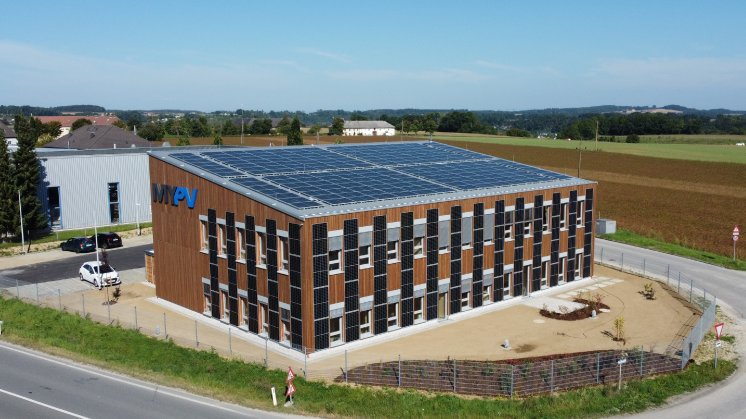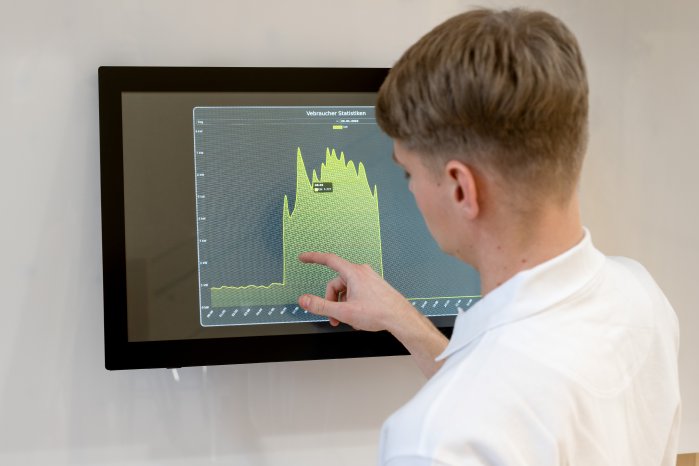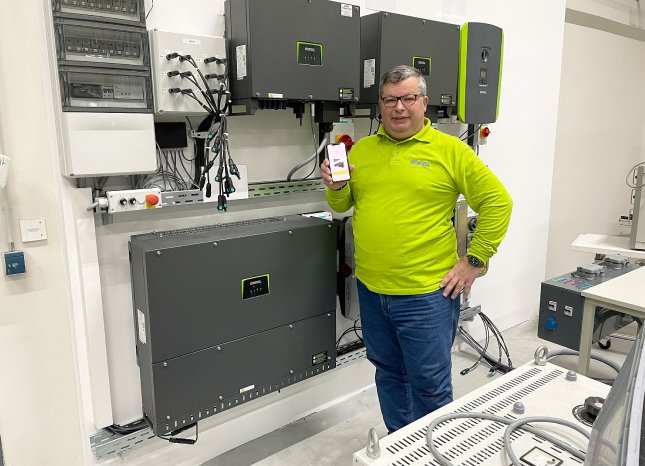my-PV discovered the KOSTAL inverter for itself and selected it as the core of its system.
Thomas Garber, Product Manager at KOSTAL Industrie Elektrik and the person responsible for the new inverter, says: "The PIKO CI is the first commercial inverter from KOSTAL in this power class. It is in great demand throughout Europe. So it is of course all the nicer that my-PV chose KOSTAL when planning its company’s new premises."
What does my-PV do?
my-PV is dedicated to indoor heating generated with solar electricity and so is taking a step beyond hot water preparation. The idea is becoming more and more important all the time and confirms my-PV's strap line "cables rather than pipes". With growth rates of 50 % per year and international sales, including some outside Europe, my-PV is enjoying huge success on the market.
my-PV puts its faith in KOSTAL technology
For many years, my-PV has relied on open interfaces and collaborations based on partnership with many component manufacturers in the PV industry. A particularly long and strong partnership links my-PV GmbH with KOSTAL Solar Electric GmbH. When deployed in a single-family home, my-PV is happy to use information on the surplus power provided by KOSTAL inverters. "This presents real added value and benefit to our customers," explains product manager Reinhard Hofstätter. So it is not surprising that new commercial inverters from KOSTAL handle DC conversion in the company’s new premises. “We collaborate very successfully with many inverter and electricity storage manufacturers. For many years now, we have also established close personal ties with KOSTAL during training courses and presentations. It was clear to us that KOSTAL inverters would work in our new premises," explains Hofstätter.
Energy transition and efficiency set benchmarks with style
If form follows function, the my-PV GmbH building can be described as stylistically successful and yet uncompromisingly oriented towards self-sufficiency. Photovoltaics were installed as a style-defining element on all façades, including the north side. They divide the façade surface in a strict geometric fashion, alternating with vertical wooden cladding and window surfaces. Light-coloured window frames and covers for the blinds contrast with black PV and deep brown façade timbers. The south-facing pitch roof with an average incline is covered with four large and four smaller photovoltaic panels parallel to the roof. In total, the building envelope provides 100 kilowatt-peak PV power for self-sufficiency. The founder of the company himself sized the wooden studs of the low-energy building in a way that would allow photovoltaics to be perfectly integrated.
KOSTAL PIKO CI – performance and efficiency for commercial applications
In 2020, KOSTAL Solar Electric GmbH presented its new inverter series for commercial applications. In 2021, my-PV GmbH integrated the new inverters into the energy concept of its low-energy commercial building, which is trend-setting both in terms of its architecture and energy sourcing. The above-average range of functions, great intelligence, extensive communication options, reliability and ergonomics won the company over.
Thanks to their protective class IP65 and a tested temperature range of -25 °C to +60 °C, the inverters could be installed outside the building. "Space-saving for the interior and accessible at all times," Thomas Garber emphasises. "Our PIKO CI devices are designed for 50 % overcrowding on the DC side. If more PV power is needed in the company’s new premises in the future, the setup can be easily expanded." Integrated circuit breakers that can be controlled externally are also integrated into every PIKO CI - expensive external circuit breakers no longer have to be installed. An efficiency of 98 % rounds off the performance package of the PIKO CI inverters – an important aspect for my-PV GmbH as an expert in storing photovoltaic surplus electricity in the form of heat in order to achieve a maximum degree of self-sufficiency.
Keeping energy in the building
The my-PV technology focuses on efficiency through high self-consumption and use of surplus energy through storage in the form of heat. As little as possible of the self-generated solar power should be fed into the grid. "Our philosophy is to keep as much self-generated electricity in the building as possible. Self-generated green electricity is valuable and, in our opinion, should be kept in the building under all circumstances. This is the principle of our AC•THOR and our heating rod technology. Feeding electricity into the public grid can only be the very last option for buildings - if only to avoid overloading the grids," explains Reinhard Hofstätter.
In the company's new premises, the floor slab functions as a heat reservoir. Surplus electricity is fed via electric heating loops into the concrete, which is charged with heat and slowly releases it again at night. "The system is an energy storage system for surplus electricity; it is low-maintenance and highly efficient. This energy is now reliably supplied by the PIKO CI."
Independent – even in transitional periods
The 100 kilowatt-peak photovoltaic capacity is allocated over the floor space of more than 800 m² in the my-PV low-energy building so that the company headquarters can itself generate enough electricity for consumption and heat even in the transitional period. The photovoltaics integrated into the façade in all orientations deliver good performance even when the sun is low - apart from the north side, where the photovoltaics take on more of a representative character. The south-facing pitch roof was covered with photovoltaics parallel to the roof, which is very conducive to the overall impression of the building structure and PV maintenance. The total electricity generation is enough to also supply electric vehicles for employees.
12 AC•THOR devices for maximum self-sufficiency
The anticipated self-sufficiency in the new headquarters should be around 52 % thanks to the photovoltaics and AC•THOR control. This is a good value considering that there is no electricity storage installed in the building. A total of 12 AC•THOR devices manage the efficient use of self-generated solar power. "Electricity storage systems are regularly integrated into the building network, but only for test purposes. my-PV systems store surplus electricity from photovoltaic systems in the form of heat. This brings the benefit of much lower costs compared with electricity storage systems," explains Reinhard Hofstätter. The my-PV premises show how the energy transition can succeed both in terms of architecture and energy. The use of KOSTAL inverters underlines the desire for efficiency and high functionality.






